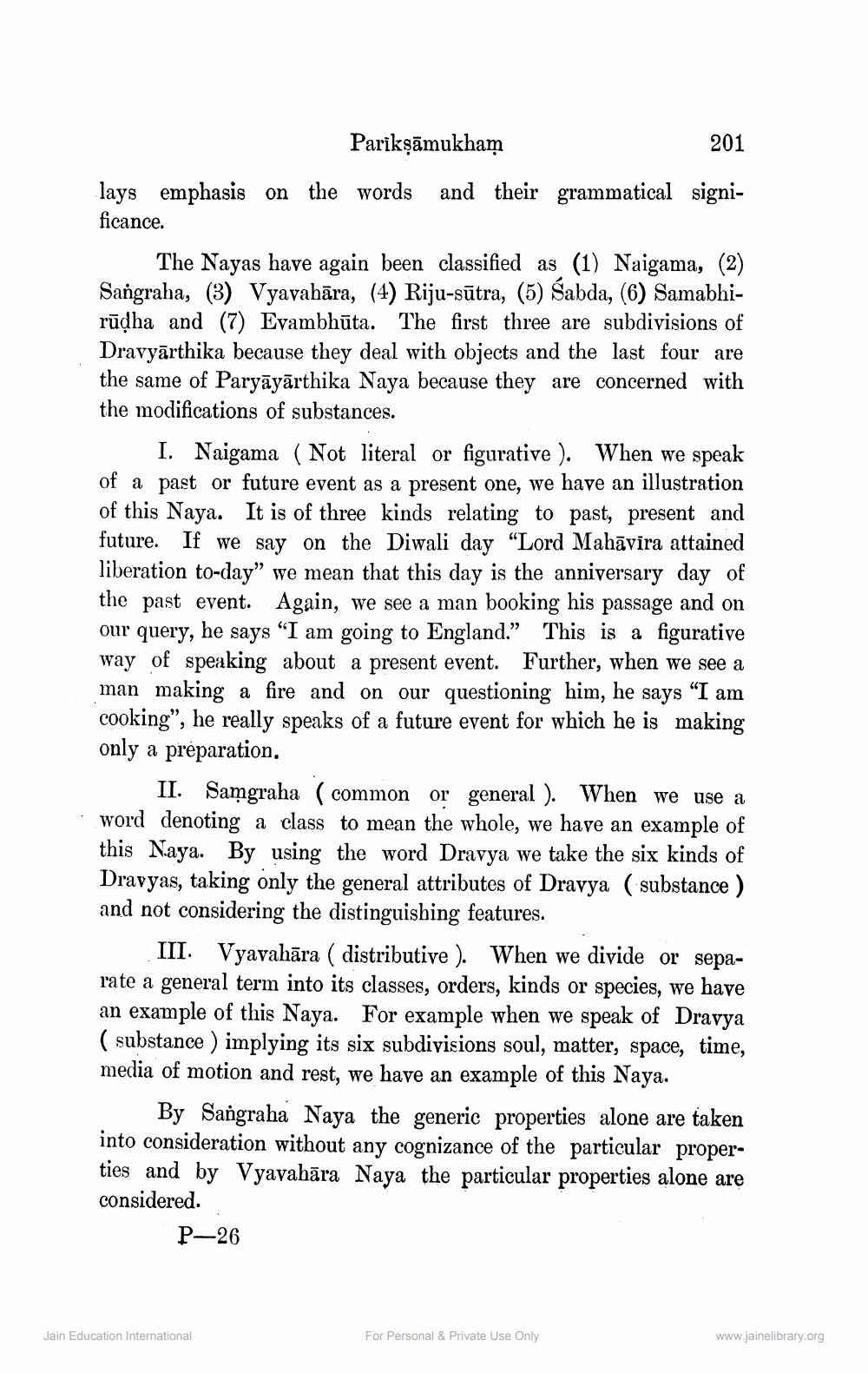________________
Parikṣāmukham
201 lays emphasis on the words and their grammatical significance.
The Nayas have again been classified as (1) Naigama, (2) Sangraha, (3) Vyavahāra, (4) Riju-sūtra, (5) Sabda, (6) Samabhirūờha and (7) Evambhūta. The first three are subdivisions of Dravyārthika because they deal with objects and the last four are the same of Paryāyārthika Naya because they are concerned with the modifications of substances.
I. Naigama ( Not literal or figurative). When we speak of a past or future event as a present one, we have an illustration of this Naya. It is of three kinds relating to past, present and future. If we say on the Diwali day “Lord Mahāvīra attained liberation to-day” we mean that this day is the anniversary day of the past event. Again, we see a man booking his passage and on our query, he says “I am going to England." This is a figurative way of speaking about a present event. Further, when we see a man making a fire and on our questioning him, he says “I am cooking”, he really speaks of a future event for which he is making only a preparation.
II. Samgraha (common or general ). When we use a word denoting a class to mean the whole, we have an example of this Naya. By using the word Dravya we take the six kinds of Dravyas, taking only the general attributes of Dravya ( substance ) and not considering the distinguishing features.
III. Vyavahāra ( distributive ). When we divide or separate a general term into its classes, orders, kinds or species, we have an example of this Naya. For example when we speak of Dravya ( substance ) implying its six subdivisions soul, matter, space, time, media of motion and rest, we have an example of this Naya.
By Sangraha Naya the generic properties alone are taken into consideration without any cognizance of the particular properties and by Vyavahāra Naya the particular properties alone are considered.
P-26
Jain Education International
For Personal & Private Use Only
www.jainelibrary.org




